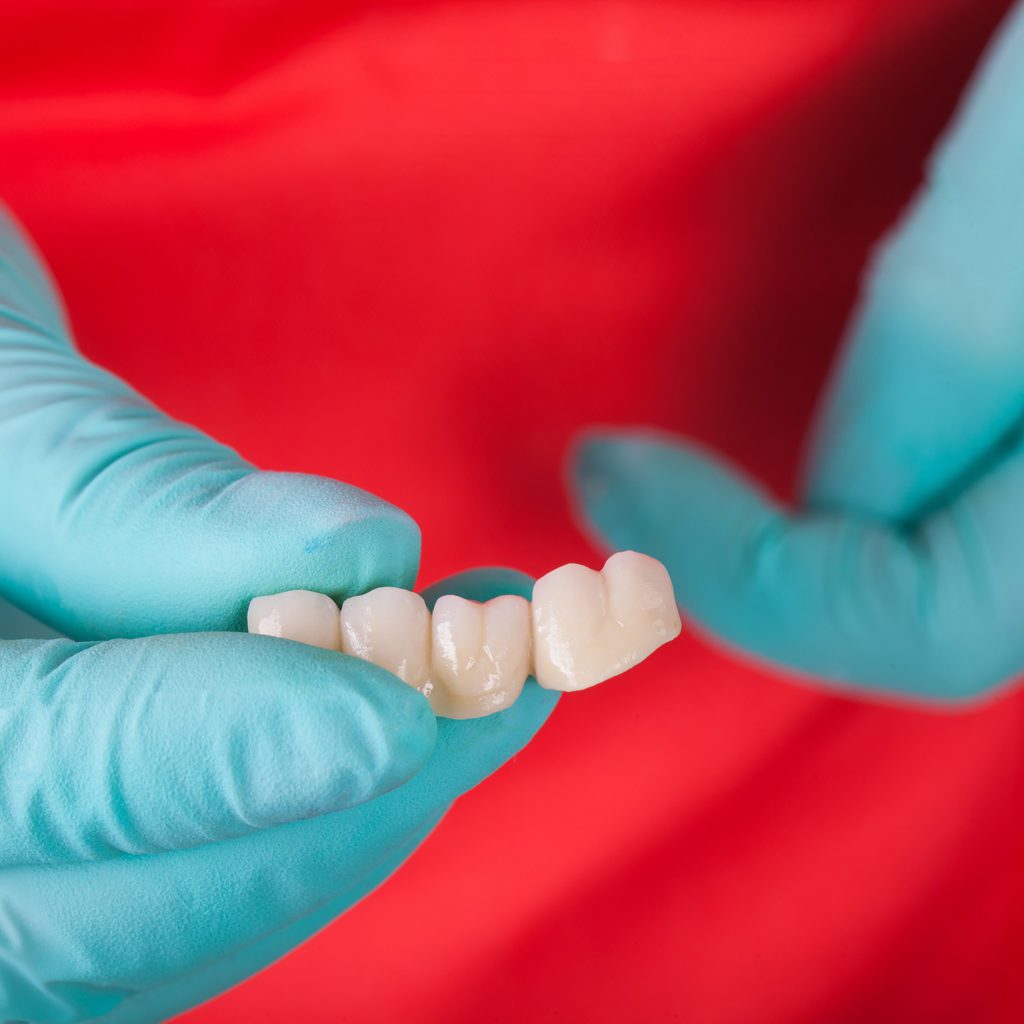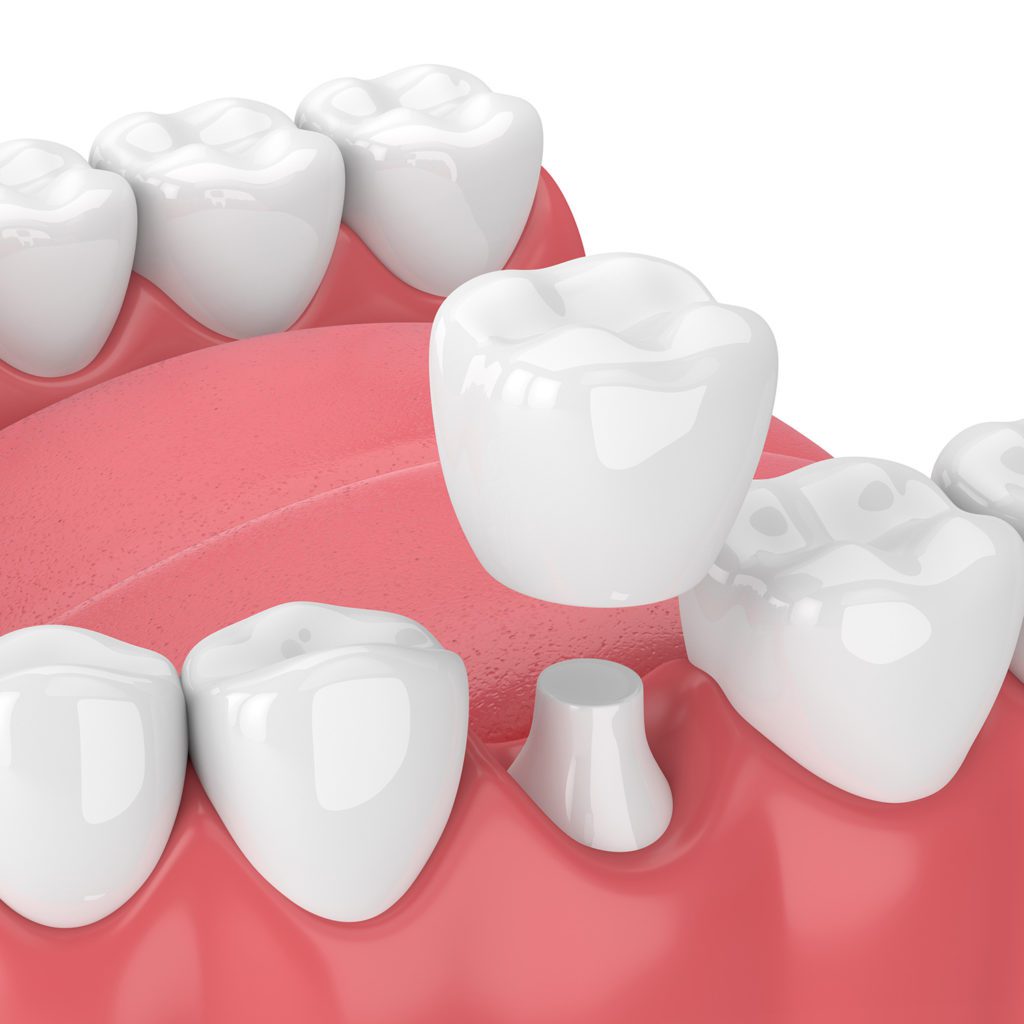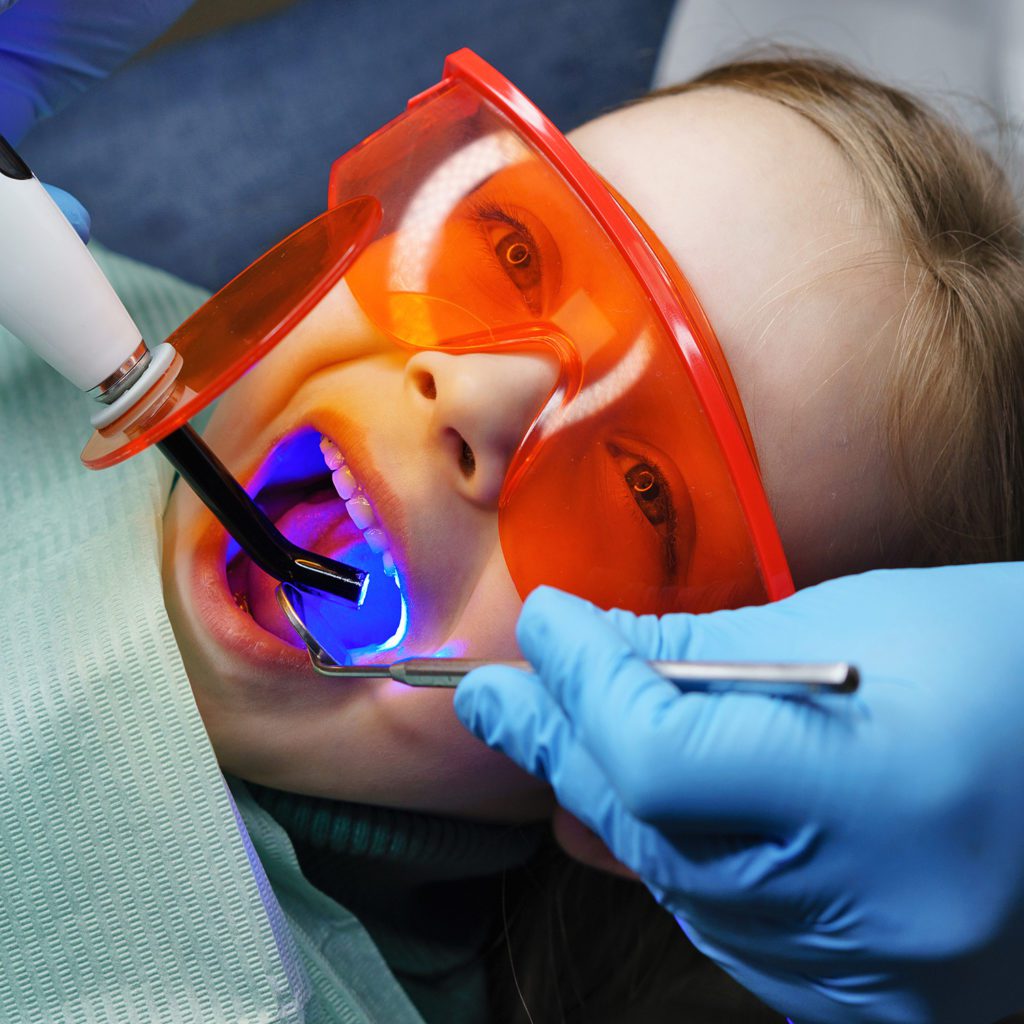Restorative Dentistry Reno, NV
Best Restorative Dentistry in Reno, NV
Restorative dentistry serves to restore teeth that may have been damaged through common oral health problems or more serious dental issues. Tooth decay, wear, and damage are a natural result from the intense workout and bacterial influx our mouths get every day. Our dental team can restore your damaged teeth with natural-looking materials, like composite resin fillings and porcelain crowns, inlays, and onlays. This means that you can retain an all-white smile. The benefit of restorative dentistry is that many of the procedures overlap with cosmetic dentistry procedures allowing for modern restorations that are designed to improve the look and feel of your smile and enhance your overall appearance. Often time’s restorative dental procedures are a result of a patient who either has overlooked the necessity of routine dental care or has a dental problem that was not visible by the naked eye. This is why we recommend visiting our dental office every six months to check for signs of tooth decay, gum disease or other dental health issues that may be prevented before they become costly or more serious. Below is a list of the common restorative dentistry procedures that we provide to help you with issues that may affect your teeth, gums or smile.

Bridges are used to take the place of missing teeth. Bridges are made by first taking an impression of your mouth. The impression is sent to a dental lab where your bridge will be custom made to fit your mouth and match your natural tooth color. A temporary tooth will be placed into your mouth until your permanent bridge is ready and cemented into place. Bridges are very durable and can last a lifetime with extra care and good oral hygiene.
The artificial tooth or teeth in the bridge can be made from metal like silver or gold or a more natural-looking material like porcelain or composite. The dental bridge is anchored on each side by natural teeth or dental implants if necessary.
Dental bridges can be essential to fill gaps between teeth making a smile whole and complete. There can be many reasons for tooth loss including:
- Disease or decay
- Accident
- Tooth extraction
- Gum disease
- Genetic or medical reason (ectodermal dysplasia)
- Drug use
Not only do missing teeth impair a full, beautiful smile but they also affect your bite, chewing, jaw structure, speech, and the shape of your face. Missing teeth disrupt the entire functionality of the mouth as the teeth around, above, or below the gap will start to shift. It is important to address gaps before all your remaining teeth shift into the missing spaces.
The most common missing or extracted teeth are wisdom teeth, upper lateral incisors, and second premolar/bicuspids.
While removable partial dentures or false teeth and dental implants are also solutions to fill missing gaps, dentists will often suggest dental bridges instead. Bridges are the best option as they are fixed dental prostheses, proven to be the most effective.
Who’s a candidate?
Anyone who is missing between one and three teeth is a candidate for a dental bridge. Additionally, anyone who has undergone a dental procedure that resulted in tooth extraction will need a dental bridge to replace the missing tooth.
A good candidate for a dental bridge has good oral hygiene and strong teeth. If the patient needs dental implants in order to provide anchors for the dental bridge, they must have healthy bone volume to support the implant posts.
Who isn’t a candidate?
Patients who do not have strong enough teeth to provide good anchors for the dental bridge should not receive a dental bridge. Because the bridge relies on the integrity of the teeth on either side, a good candidate for a dental bridge must have healthy gums and teeth free from decay or disease. A dentist may suggest fixing these kinds of issues before the abutments are placed on the anchor teeth.
Furthermore, patients who have bone degeneration may not be good candidates for dental implants if those are needed to support the bridge. If this is the case, a dentist may recommend a bone graft in order to support an implant post.
Dental bridges are also not suggested for pediatric patients. Therefore, children are also not good candidates for dental bridges. If a child loses a premature tooth outside of natural causes such as during a sports accident or decay, our dentists may suggest a space maintainer. This will keep the teeth from shifting until the permanent tooth comes in.
If the child loses a permanent tooth, they will have to wait until 16 or 17 when their jaw and teeth stop developing to receive a fixed dental bridge. The space maintainer would have to be in place until this time.
Types of Dental Bridges
There are generally three types of bridges:
- Traditional Bridges
This is the most common type of bridge. These involve applying crowns, or abutments, to the teeth or implant on each side of the gap while the artificial tooth or teeth (pontics) go in the place of the missing teeth. The pontic is typically made of a metal alloy, ceramics, or a combination of the two. - Cantilever Bridges
These types of bridges aren’t used as much anymore as they put a lot of pressure on the neighboring tooth. They are bridges that are used when there is only one adjacent tooth on the side of the gap. As such, they are used when there is only one missing tooth. - Maryland Bonded (Resin-Bonded) Bridges
These bridges are typically made with plastic teeth and gums and supported by metal framework. The metal wings are then attached or bonded to the teeth on both sides of the gap.
Dental Bridge Materials
The pontics, or artificial teeth that make up the dental bridge, can be made from a few different materials. Our dentists will go over the options for different materials to discuss budget, aesthetic goals, and bridge placement.
- Porcelain Pontics
Pontics made from porcelain are a natural-looking option to fill in gaps. While these may be the most expensive option, they are the most discreet and dependable way to fill in a smile. Many patients look at porcelain bridges as a life-long investment to restore their smile. Porcelain pontics are strong, lifelike, and long-lasting. - Zirconia Pontics
Zirconia is a ceramic material used to make artificial teeth. Zirconia pontics are very strong, like metal bridges. They are also made to match the color of your natural enamel and slightly translucent, making them a great, lifelike option to fill in the missing gaps in your smile. - Gold or Metal Alloy Pontics
Some patients prefer the look of gold or silver in their mouths. In that case, the pontics in a dental bridge can be made with gold or another metal alloy like silver, platinum, or palladium. Each of these metals is biocompatible, durable, and highly resistant to wear and tear and corrosion. - Porcelain-Fused-to-Metal (PFM) Pontics
Pontics can also be made of a metal alloy base with a thin layer of porcelain fused on to make it look like a real tooth. The metals that are typically used are noble metals including gold, platinum, palladium, and silver. Each of these metals is biocompatible and highly resistant to corrosion and oxidation. The porcelain layer is resistant to stain and makes the pontic hard to distinguish from natural tooth enamel.
The Procedure

The first step in applying a dental bridge is to prepare the teeth on each side of the gap for the crowns or abutments. Our dentists will prepare the tooth by shaving or resizing it to correctly fit the crown. The crown is a permanent cap on the tooth so it must be placed right. Furthermore, the crown must be shaped right in order to fit the pontic.
The dentist will then take an impression of your teeth using either putty or a digital scanner. These impressions are used to create your dental bridge. While we do offer dental laboratory services at our offices at Brunelli Dental Practices and offer same-day bridges and crowns, there are situations where we have to send out impressions to make the bridge.
In this case, you will be fitted for a temporary bridge as a placeholder. You must be careful to avoid sticky or hard foods so you don’t damage the temporary bridge as you wait for the permanent one.
To place the permanent bridge, the dentist will use dental cement to first anchor the crowns. The dentist will also secure the pontic or pontics to the gum tissue to prevent bacterial inclusion.
Dental Implants
If the patient needs dental implants for a successful dental bridge, the procedure is more invasive. The dentist will first take x-rays to determine the jaw’s bone density and the placement of the implant posts.
The dentist will then numb the patient’s gums and jaw. After incisions are made, the dentist will implant posts into the patient’s jawbone. Stitches will close the incision and then the wounds must have time to heal, at least four to six months.
Once the dental implants are placed, the dentist can then apply the dental bridge to the implants acting as abutment teeth just like with natural teeth.
Dental Bridge Care
Once you have dental bridges in place, you must care for your teeth like you normally would. Your oral health will continue to be important to ensure the longevity of the dental bridge. When bridges are cared for properly they can last up to 15 years before potentially needing to be replaced. That means flossing regularly, brushing at least twice a day, and returning to the dentist for regular cleanings and checkups. Your oral care should never be an afterthought!
To keep your teeth looking uniform, we also offer whitening services. That way the rest of your natural teeth will stay the same shade as your new dental bridge and crowns!
Cost of Dental Bridges
The cost of a dental bridge depends on the type of material used and how many pontics, artificial teeth, are needed to fill the gap. Furthermore, certain bridges may involve a more invasive procedure such as dental implants which will cost more. On average, a pontic can cost from $500 to $1,500.
The cost of a dental bridge will also depend on your insurance coverage. If you would rather forego the insurance process or if you don’t have dental insurance, we offer dental savings plans at Brunelli Dental Partners. Our savings plans don’t require deductibles, forms, pre-existing condition limitations, or yearly maximums. Our savings plan can help you save up to 15% on crowns and bridges.

A crown (also referred to as a cap) is used to entirely cover a damaged tooth. A crown not only strengthens a tooth, but it can dramatically improve a tooth’s appearance, shape and alignment. Crowns are made by first taking an impression of your mouth. The impression is sent to a dental lab where your crown will be custom made to fit your mouth and match your natural tooth color. A temporary crown will be placed into your mouth until your permanent crown is ready and cemented into place. Crowns are very durable and can last a lifetime with extra care and good oral hygiene. We have a lab in our office and offer same day crowns. We send some cases out to other labs but most of our crowns are done in our office.
Who’s a Candidate?
Patients who benefit from crowns include those whose original teeth need something more to make them look whole. Types of teeth that could use a crown include:
- Cracked teeth
- Decayed teeth
- Discolored teeth
- Teeth that have been worn down by grinding (bruxism)
- Teeth that have large fillings
- Teeth that require a dental bridge
- Dental implants
- Teeth that need cosmetic dentistry improvement
- Teeth that have undergone root canal treatment
- Teeth with damaged surfaces
Sometimes after a procedure, there isn’t enough tooth structure left for a filling. This is when a crown is most necessary. Crowns are a great way to make teeth look uniform, and as a result, complete a full smile.
Pediatric Patients
Crowns are often suggested for pediatric patients. Child patients who still have baby teeth will be fitted with crowns in the event of tooth decay. That is because baby teeth cannot support fillings. Crowns may also be a way to prevent cavities for children who have poor oral hygiene.Our dentists at Brunelli Dental Partners will educate your children in good oral health to avoid cavities and the future need for dental crowns. But if the parent nor child cannot keep up with dental health, or there is a medical reason for weak, decayed teeth, our pediatric specialists may recommend crowns.
Crowns may be a good way to avoid frequent general anesthesia if the child has multiple cavities.
Crown Materials

Dental crowns are made from a myriad of materials. Each type of crown has its benefits and dentists may recommend different materials for different applications. Dental crowns range from steel to ceramic and porcelain to composite resin.
The type of crown you choose will depend on the way you want your smile to look, your budget, the reason for the crown, and the crown’s placement. For instance, if the crown is placed on a back molar that is used to chew rigorously and regularly, a stronger material may be necessary to ensure longevity.
At Brunelli Dental Partners we have a lab within our dental office. That means we can make and apply color-matched ceramic, porcelain, and composite crowns during same-day appointments. If the type of crown needs to be sent to an outside lab, you will be fit for temporary crowns in-house until permanent crowns are ready to be placed.
Ceramic Crowns
Porcelain is a type of ceramic that is commonly used for dental crowns. Porcelain crowns are the most natural-looking crowns and are most often chosen to complete a healthy smile. The crowns are made to match your natural enamel color so that your tooth looks complete. If you want your crowns to be as discreet as possible, all-ceramic and all-porcelain crowns are the best choices. Ceramic crowns are also typically used for front teeth.
All Resin Composite Crowns
Composite crowns are the least expensive material used to make crowns. Composite crowns are made to match your natural teeth as well, simply enhancing your original smile. Composite crowns, however, wear down faster over time and are more prone to chip, crack, or fracture compared to crowns using stronger materials.
Stainless Steel Crowns
Stainless steel crowns are used for temporary crowns and on pediatric patients. Because they are lower in cost, stainless steel crowns are used on baby teeth that will soon be lost. Adult patients that require crowns sent from a dental laboratory will typically be fitted with stainless steel crowns until the custom-made crowns are ready to be placed.
Porcelain Fused to Metal Crowns
Porcelain fused to metal crowns are crowns made of a metallic material but feature a layer of porcelain so they look natural in your smile. These crowns are more cost-effective because of the metal base but they may not be recommended for patients who grind their teeth or suffer from receding gum lines.
There is potential for the porcelain to chip or crack, showing the metal underneath. The same issue can arise from receding gum lines. The base metal of porcelain fused to metal crowns can begin to show, which may be undesirable for some patients.
Gold Crowns
Gold crowns can definitely brighten your smile! Gold tooth crowns are typically made of a combination of gold, copper, and other metals. Some patients like the look of a gold crown, especially on back molars that give a little glint when they smile big. Gold crowns are more costly since real gold is used to make them, but they are long-lasting, durable, and highly bio-compatible to gums and surrounding teeth.
Metal Alloy Crowns
Metal alloy crowns are made from less precious metals like nickel, cobalt, or beryllium. These crowns are durable and strong which makes them long-lasting and resistant to corrosion. They are also compatible with other teeth in the mouth making them a comfortable choice for a crown. Metal crowns, however, do not blend well with the smile. So it depends on if you want visible crowns or not!
Dental Crown Procedure and Placement
Depending on the initial reason for visiting our clinic you may need a crown to cap a root canal or complete a decayed or damaged tooth. After the initial procedure, the dentist will prepare the original tooth by removing enough of the original tooth for a crown. This includes removing any part of the tooth that is damaged or diseased. The dentist will numb the tooth and gum tissue to make the procedure more comfortable. The amount of tooth removed will depend on the initial procedure.
Next, an impression will be made of the tooth to provide an exact model for the crown using digital scanners or putty. Depending on the material and type of crown we need to make, we can place the crown during the same appointment. If the permanent crown needs to be made at an outside lab, a temporary crown made of acrylic or stainless steel will be made and placed.
If you do receive a temporary crown, the tooth may be sensitive to hot and cold sensations. You should also avoid sticky foods and chewing gum.
Once the permanent crown is placed on the tooth, the dentist will make adjustments to ensure it fits with the surrounding teeth and doesn’t inhibit your bite. The dentist may shave down the sides or the top of the tooth to make it feel comfortable in your mouth. You will likely receive a local anesthetic to make the procedure more tolerable.
Dental Crown Care
Once the permanent crown is in place, you will need to take care of your teeth in order to ensure longevity. That means brushing your teeth twice a day, flossing, and avoiding hard, sticky foods. By returning to the dentist for regular cleanings, you can help deter plaque buildup which will help your new crowns stay clean and last longer.
Sometimes, things happen in life that we cannot control, such as losing a tooth due to injury, periodontal disease, or other various reasons. Fortunately, technology has progressed to where we can now fit you with a custom tooth implant to restore your smile, function, and confidence. Getting a dental implant involves two separate steps. First, we position a metal post into the jaw. Once that has healed, a replacement tooth is attached to the metal post. While implants are typically more expensive than other dental methods, they provide superior benefits.
To receive implants, you need to have healthy gums and adequate bone to support the implant. You must also be committed to excellent oral hygiene and regular dental visits as these are critical to the long-term success of dental implants.
Dental implants are a revolutionary treatment for patients who wish to replace missing teeth. Implants provide a very real and cosmetic solution when a tooth is missing or is beyond saving. Instead of dentures, you can have teeth you won’t have to take out at night, can chew all foods with, and are absolutely natural looking.
Greater Strength
Dental implants are actually stronger than actual teeth, meaning they won’t chip or break easily. Their strength helps them last, sometimes reaching more than 20 years before needing to be replaced.
Independent Support
Unlike dental bridgework, dental implants do not rely on your other teeth for structural stability. This lessens the impact on the rest of your mouth, resulting in greater overall oral health.
Natural Look
All our dental implants are designed to look natural, providing you with confidence in your smile. Once the implants are in and your mouth has healed, you won’t even be able to tell the difference between the implant and your natural teeth.
There are two types of dentures available. Partial dentures are used when some natural teeth remain, while complete dentures are used to completely replace all teeth. Dentures are made to resemble your natural teeth so there should be no noticeable change to your appearance. The dentures are custom created to resemble natural teeth. New dentures may feel awkward or loose for the first few weeks until you are comfortable eating and speaking.
If you have a tooth that requires a filling, the dentist will first remove the decayed tooth material, clean the affected area, and then fill the cleaned out the cavity with a filling material.A filling helps prevent further decay by closing off any cracks or spaces where bacteria can enter. If you have a tooth that requires a filling, the decayed or affected portion of the tooth will be removed and then filled with a composite material that matches your tooth color. There are many types of filling materials available, each with their own advantages and disadvantages. Each filling material is briefly explained below:
Composite Fillings
Composite resins are custom made to the exact color of your natural teeth, creating a more natural appearance. While white fillings may be less noticeable than other materials, they usually only last between 3 and 10 years and may not be ideal for large fillings as they may chip or wear over time.
Other Options
Porcelain fillings are called inlays are custom created in a lab and then bonded to the tooth. They can be matched to the color of the tooth, resist staining, and are about the same cost as gold fillings. If decay or a fracture has damaged a large portion of the tooth, a crown, or cap, may be recommended.

